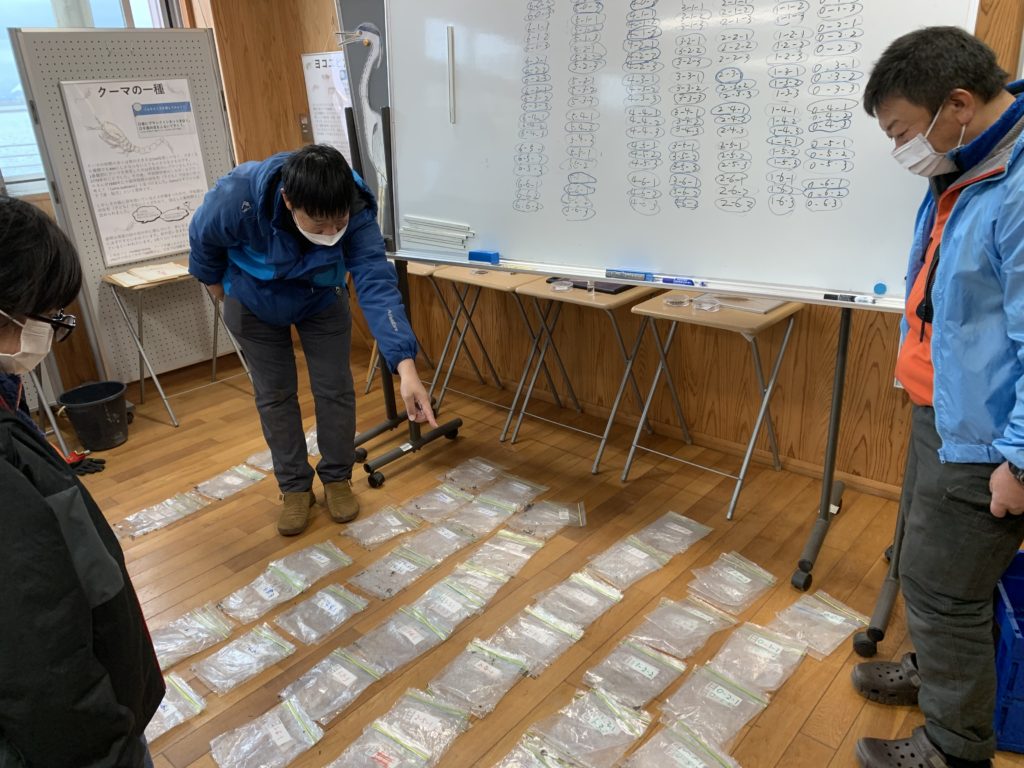
Citizen Science Survey
The non-specialist survey method compiled by the Japan International Wetland Conservation Union to survey living creatures in tidal flats is the basis for this survey. It has been conducted every year from the end of July to early August since approximately 2010. The survey is open to the public and conducted as one of our tidal flat observation events. Regular citizens come and find out what kind of organisms live on the tidal flats. Although we cannot determine the habitat density through the surveys, we can discover the distribution of organisms in the tidal flats.
Some children participate in order to complete summer research projects for school that they have chosen themselves.

Marine gastropods (Assiminea japonica)

Collected survey samples at each site
Marine Gastropod Survey
The habitat of marine gastropods (Assiminea japonica) was greatly reduced when due to construction to reinforce the levee. This survey was started as a form of post-construction monitoring.
The survey is widely advertised and conducted by citizens as one of our tidal flat observation events.
Since multiple species of marine gastropods live at subtly different elevations between the intertidal zone and the reed zone, we are also investigating which species are distributed in which areas.
This survey has been conducted every December since 2010 on a tidal flat with a reed zone at the mouth of the Shonai River on the left bank, commonly known as the “Inae reed field.” We target the marine gastropods, a small family of mollusks only a few millimeters in size.
Since identification requires a high level of skill, participants are asked to participate in the field, focusing on quadrat sampling and sorting indoors. The sorted specimens are analyzed by specialists to identify their distribution and habitat conditions.

Spawning of Yamato ragworms
Yamato Ragworm Survey
The survey is conducted at night from mid-February to the end of March every year, when the tide is shifting from high to mid-tide, in order to confirm the spawning of the Yamato ragworms that inhabit tidal flats in brackish water areas.
Because this is a nighttime survey, there is basically no public participation, and only staff volunteers conduct the survey.
Using lamps at night, we collect jellyfish and fry (juvenile fish) in addition to observing the spawning of ragworms.
